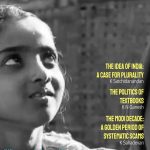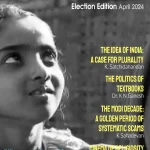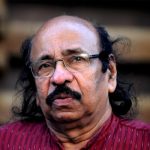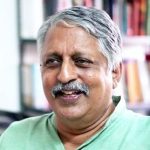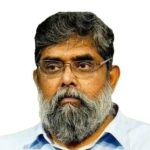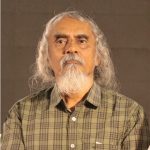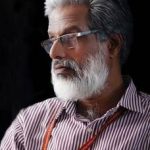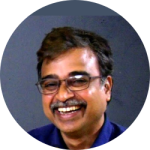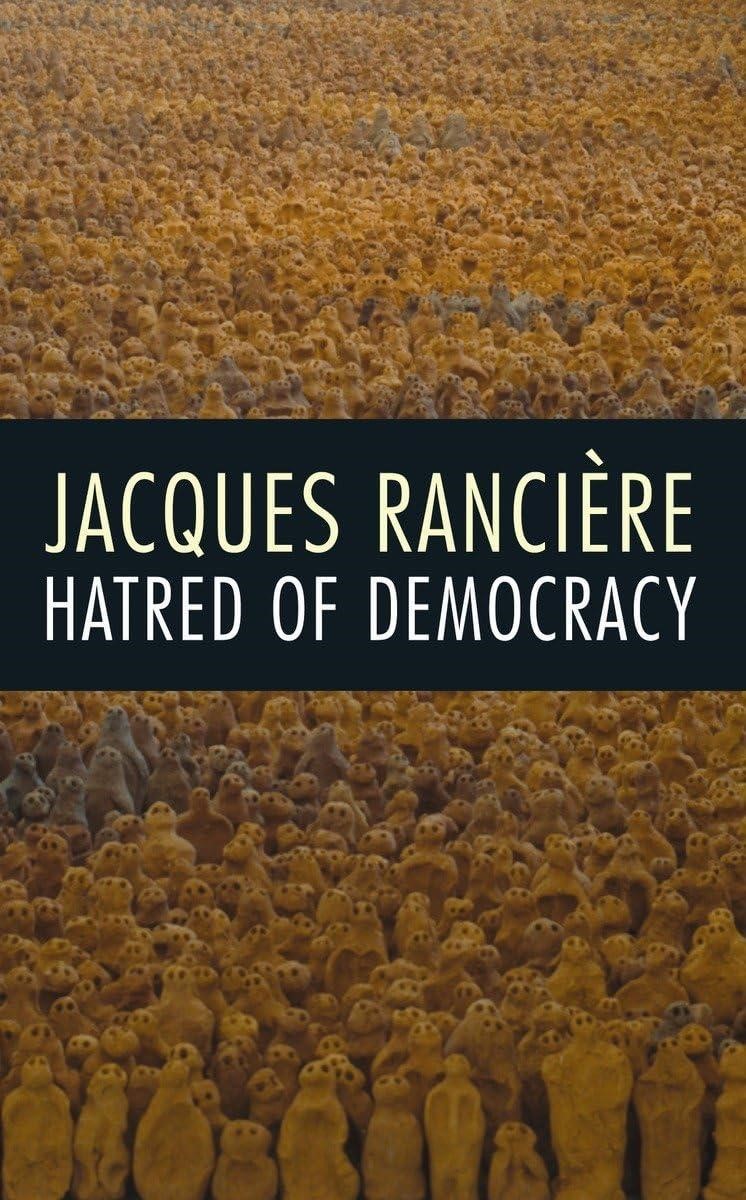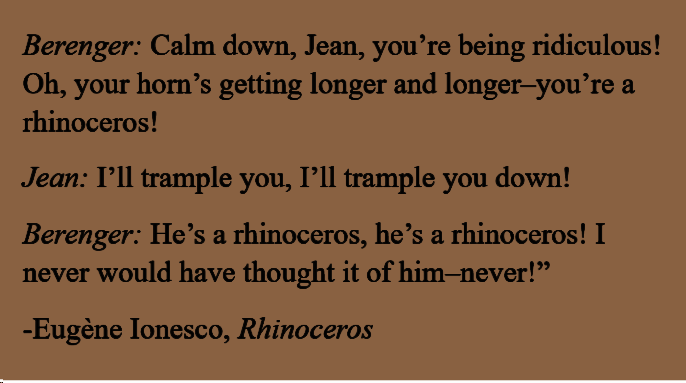

K. Satchidanandan
The concept of plurality is central to any genuine idea of India as a nation. We have had conflicts whenever any agency has tried to impose forms of religious, ethnic, cultural or linguistic hegemony in the name of unity while we have lived happily for centuries with the idea of plurality which to our people has been the very organic nature of their environment, natural and enriching like bio-diversity itself. This plurality is also part of the very essence of our democratic polity.
What exactly do I mean by democracy? The first condition for understanding democracy is to detach it from the instruments of the State and see it as people’s power which is the only true form of power as it is not, they who are resisting the power of the State but the State that is resisting, constraining, containing and suppressing the power of the people through its institutions of law and order. While true democrats always speak of expanding the base of democracy, overcoming its constraints through popular action aimed at social justice and going beyond its present limitations and curtailments of rights, the enemies of democracy fear even the exercise by the common people of already existing freedoms and want to put further curbs on them and confine their availability to the upper layers of the society. Jacque Ranciere, the radical French thinker, in his treatise, Hatred of Democracy (Verso, 2006) remarks how the ‘government of anybody and everybody’ is bound to attract the hatred of all those who are bound to govern men by their birth, wealth, or knowledge. “Today it is bound to attract this hatred more radically than ever since the social power of wealth no longer tolerates any restrictions on its limitless growth, and each day its mechanisms become more closely articulated to those of State action… State power and the power of wealth tendentially unite in sole expert management of monetary and population flows. Together they combine their efforts to reduce the spaces of politics.
But reducing these spaces, effacing the intolerable and indispensable foundation of the political, means opening up another battlefield- it means witnessing the resurgence of a new radicalized figure of the power of birth and kinship. No longer the power of former monarchies and aristocrats, but that of ‘the peoples of God’.” Ranciere takes the examples of radical Islam and the American evangelists fighting democracy in different ways, and in our context, it can well be the apologists of ‘Hindutva’. Democracy destroyed in the name of a holy book or religion and the bellicose expansion of democracy using the power of weapons into other countries are two sides of the same coin. Democracy is neither a form of government that enables oligarchies to rule in the name of the people, nor is it a form of society that governs the power of commodities. It is the action that constantly wrests the monopoly of public life from oligarchic governments and the omnipotence over lives from the power of wealth. No institutional form can guarantee democracy unless it is constantly active and can wrench its power from its alienated forms.
“Today it is bound to attract this hatred more radically than ever since the social power of wealth no longer tolerates any restrictions on its limitless growth, and each day its mechanisms become more closely articulated to those of State action…”
Jacque Ranciere
This is where politics really begins: to use Ranciere’s phraseology, when it converts what was just ‘noise’ into language, when those men and women who don’t have the time to do anything other than their work take the time, they don’t have to prove that they are indeed speaking beings, participating in a shared world and not furious or suffering animals. Thus, the inaudible is rendered audible, the invisible becomes visible, what was animal noise becomes human speech: political activity reconfigures the distribution of the perceptible. It resists ‘policing’ of every kind, challenges the watching eye, the one we find in Bentham’s concept of ‘panopticon’ that Foucault uses as a paradigm for the master’s omnipresent eye (Discipline and Punish: The Birth of the Prison) The challenge to Indian democracy now comes precisely from those sections who hate democracy as an idea even when they pay lip-service to it or bow before the steps of the parliament house. One needs to clearly distinguish hatred from critique because critique is essential to expand the base of democracy and to redeem it from the hollowness caused by the constant depletion of its meaning turning it into just a formal structure with no democratic content that is continually happening to our democracy. But hatred comes from a deep contempt for the people with their plural natures and aspirations. And this is what forces the rulers to look at the opposition as an enemy and criticism as treason and conspiracy.
The hatred of democracy manifests itself in India chiefly in four ways: one, intolerance towards India’s religious, ethnic, linguistic, literary, philosophical and cultural plurality; two, suppression of difference, silencing of popular and intellectual opposition and the consequent thwarting of the freedom of expression; three, the enfeeblement of the federal polity and increasing centralisation of power; and four, contempt towards those sections of the population whose welfare constitutes the very goal and measure of democracy, viz, women, peasants, workers, Dalits, Adivasis as well as religious, ethnic and sexual minorities.
While speaking of plurality one needs to take note of contending notions of plurality. One of them is the market idea of plurality propounded by the globalisers and the champions of the neo-liberal economy where it means no more than the diversity of consumer products. Ethnicity in their jargon is but a trademark, regions are just product labels and tourist destinations, and people are all producers for a centralised market, completely alienated from their products once the products enter the market-chain, globalising what was local so far. The languages are meant only to reach the diverse clientele, the ‘copy’ made available in different tongues.
The second is the ‘statist’ idea of plurality where it is looked at from the point of view of governance. The attempt here is to make it ‘governable’. To some extent, it is a colonial legacy as the British had found India’s diversity an obstacle to governance that, at times, they also utilised to divide the people making control easier. In the ‘statist’ idea, plurality is acknowledged, but formatted as manageable: While we have several hundreds of mother-tongues, only 24 find place in the eighth schedule of the constitution, Hindi being given a prime place as the ‘official’ language (English being the associate official language) and we have linguistic states in each of which there are anything from 20 to 60 languages according to the recently concluded ‘People’s Linguistic Survey of India’. The State, whatever its intentions, ends up creating hierarchies among languages (and races) as well as regions leading to identity wars as we recently found in Manipur. A forced unity inevitably leads to balkanization. The great principle of federalism enshrined in the constitution is seldom reflected in the actual practices of governance. The New Education Policy and CAA are examples of how federal principles are completely sidelined while dealing with matters in the concurrent list. Regions like the Northeast seldom appear in our picture of India, especially when it comes to the cultural discourse. Arts and literature are cleanly divided into classical, folk and modern, a division legitimated through the cultural institutions, whereas in practice they have all been given to and taken from one another proving the clean and rigid division unreal and arbitrary. Certain aspects of our diversity get overlooked in the creation of the ‘imagined community’ of the nation (to borrow Benedict Anderson’s famous term) assisted by symbols. Plurality often becomes a colourful mask worn during spectacles like the Republic Day parade, a reductive, governable idea worthy of the exhibition along with the nation’s military strength, the masked theyyam (a ritual performance of Kerala) dancing behind a huge battle tank.
Political Hindutva however does not even recognise this diversity except as an unwelcome and disturbing presence. It is built over the tomb of India’s pluralist ethos that believes in dialogue, exchange, and debate. Anyone who has tried to argue with its proponents must have seen how it is like talking to a wall that only hurls stones at one instead of putting forward reasoned counter-arguments. We see it on social media every day: every criticism, even those made in the most rational and decent language, is countered by the worst forms of abuse by the self-appointed rowdy-guardians of the Hindutva ideology.
Political Hindutva, let us not forget, despite its false claims to patriotism, is a colonial construct borrowing elements from Western Orientalism, the Judaic idea of religion and the fascist ideas of cultural nationalism as manifested at various times in Germany, Spain and Italy, whose murderous intent has been expressed many a time in recent history from Gandhi’s assassination to the destruction of the Babri Masjid, the Gujarat pogrom, several bomb blasts and manufactured riots, the silencing and murder of dissenting writers and intellectuals, isolation and even lynching of those belonging to minorities in the name of food or rituals, persecution of tribal people and Dalits, the taking over and ruination of public institutions, selective action based on false accusations against non-governmental organisations, destructive interventions in autonomous bodies including Universities, ban on everything from beef to books and labour strikes, calculated censorships, labelling of every dissenter as a traitor worthy of sedition charges, the shameless promotion of chosen corporate houses through loan-waivers, subsidies and tax-exemptions (the Electoral Bonds being the tip of the iceberg of unprecedented corruption) and the brutal and blinding attacks on common people including children as we witnessed in Kashmir.
It is only proper here to remember what Umberto Eco in his Five Moral Pieces calls ‘ur-fascism’, a kind of universal, omnipresent fascist trend with the following features, some of which had been elaborated by Wilhelm Reich in his treatise The Mass Psychology of Fascism : the cult of tradition that considers truth as already revealed or known -that goes against the grain of scientific thinking, rejection of modernism, action for action’s sake done without reflection, suspicion of culture and of intellectuals, seeing any dissent as betrayal, fear of difference and the consequent rejection of pluralist ethos, appeal to the frustrated middle classes who feel the pressure from below, the negative and exclusivist way of defining the nation that leads to xenophobia, the creation of an ‘other’ blamed for all that is wrong with the society and an obsession with conspiracies, seeing pacifism as collusion with the enemy that comes from a vision of life as permanent battle that will finally lead to the lost ‘golden age’ that never existed in history, a form of popular elitism that results in scorn for the weak , machismo that condemns all non-conformist sexual habits and a contempt for women and sexual deviants, the cult of death ( ‘Viva la muerte’ -victory to death-was the slogan of the Falangists of Spain) that prefers death to life – this readiness to die also justifying the readiness to kill, qualitative populism that treats people as a monolith and identifies the voice of one small group with the voice of the whole people believing in some abstract ‘common will’ and hence opposing all parliamentary governments, and the ‘new speak’ ( a term George Orwell uses in his novel 1984 ) that sees everything in black and white, abhors all complex thinking and would like to limit the tools available for critical thinking.
It is not difficult to see almost all these symptoms, at times in transformed, veiled, or diluted forms, in the ruling Hindu right-wing in India. The Hindu cultural nationalism is nationalism shorn of the respect for regional identities and cultural differences on the one hand, and of the socialist and internationalist dimension on the other. In its atavism, faith in racial and religious superiority, opposition to egalitarianism, its rootedness in the middle classes and its collaboration with capitalism, it is no different from Nazism. Outfits like the Rashtriya Swayam Sevak Sangh, Bajrang Dal, Hindu Rashtra Sena, Sanatan Sanstha, Sreeram Sena and Hanuman Sena take after the Nazi stormtroopers, and their use of symbols like the lotus, the ganga-jal and semi-mythological figures like Rama reminds one of the Nazi deployments of Nordic symbols. Again, what the Jew was to the Nazi is the Muslim (and minorities generally) to the HMS-BJP-RSS-VHP combine: the Muslim (could well be Christian, Parsi, Buddhist or Jain) is the first ‘other’ held responsible for all the ills of the society and the suffering of the majority. Add to this their vain racist faith in their ‘Aryan’ origins and you have all the making of classical fascism modeled on Nazism. Add to it too the revelations about its terrorist activities under the cover of ‘Abhinav Bharat’ with its proven involvement in the Malegaon blasts (2008), Mecca Masjid blasts (2007), Samjhauta Express Bombing (2007) and the Ajmer Sharif Dargah blasts (2007) -that made even the Congress Prime Minister of India say that the saffron terror was even a worse threat to India than the Lashkar-e-Tayiba- and you have a perfect combination of fascism with terrorism. The present avatar of the Citizenship Amendment Act that completely excludes Muslim refugees, as well as neighbouring places like Nepal, Bhutan, Tibet, Pakistan, Sri Lanka and Myanmar all of which have persecuted minorities like Tamils, Rohingyas, Ahmadiyas, Buddhists etc, is a scary example of exclusion and ostracization and a potential instrument of othering and exile.
The idea of Hindutva and the semiticization of the Hindu religion was first mooted by the Bharatiya Hindu Mahasabha established in 1914 at the initiative of Pandit Madan Mohan Malaviya and Lala Lajpat Rai and made more militant under the leadership of Vinayak Damodar Savarkar in the 1920s. It criticized the Indian National Congress, especially for going out for Muslim support which it thought was a compromise. In 1925 Keshav Baliram Hedgewar founded the Rashtriy Swayamsevak Sangh which opposed Gandhi’s Quit India movement and supported the British efforts in the Second World War, a fact it would now like to conceal. Then came Shyama Prasad Mukherjee’s Bharatiya Jansangh which became the chief rallying point for militant Hinduists between 1951 and 1980, the year that saw the emergence of the Bharatiya Janta Party as a political outfit. In between the Vishwa Hindu Parishad had come up to spread the Hindu dharma, reconvert the ‘delinquent’ Muslims and Christians into Hinduism and to fight for banning cow slaughter. Their website clearly declares Hindutva as their ideology and the establishment of a Hindu nation as the cherished goal. The website opens with the slogan: ‘Rajniti ka Hindookaran, Hindustan ka Saineekaran’ (The Hinduization of politics, the militarization of the Hindu nation). BJP from the beginning has stood for a Hindu nation and championed the revival of Sanskrit – by which they meant of course only the Brahminical Sanskrit texts-, the idea of Hindi -which is, in fact, a mix of many languages- (as against the Hindustani closer to Urdu suggested by Gandhi) as a national language, as recently reemphasized by the Prime Minister and the HRD Minister, and the opposition to everything they brand ‘Western’. They also look at socialism, communism and secularism as ‘foreign’ ideas and consider Islam and Christianity too as alien religions. Despite its anti-caste rhetoric and even the accommodation of a few Muslims to project a secular image, its ideology remains steeped in Brahminical principles and texts like Manusmriti. While the Hindu outfits are freely burning the Indian Constitution, the burning of Manusmriti by anti-caste activists is marked as a crime. When Dalit students are being ostracized, Dalit organizations banned, and young activists are even led to suicide as in the case of Rohit Vemula, the BJP is trying, on the other hand, to claim the legacy of a radical thinker like B R Ambedkar along with that of Gandhi who was killed by a Hindu extremist and to replace Nehru, the icon of secular liberalism oriented towards egalitarian welfare politics with a refurbished Sardar Vallabahai Patel whose image suits their interests better even-though it was Patel who had advocated the ban of R S S after Gandhi’s assassination.
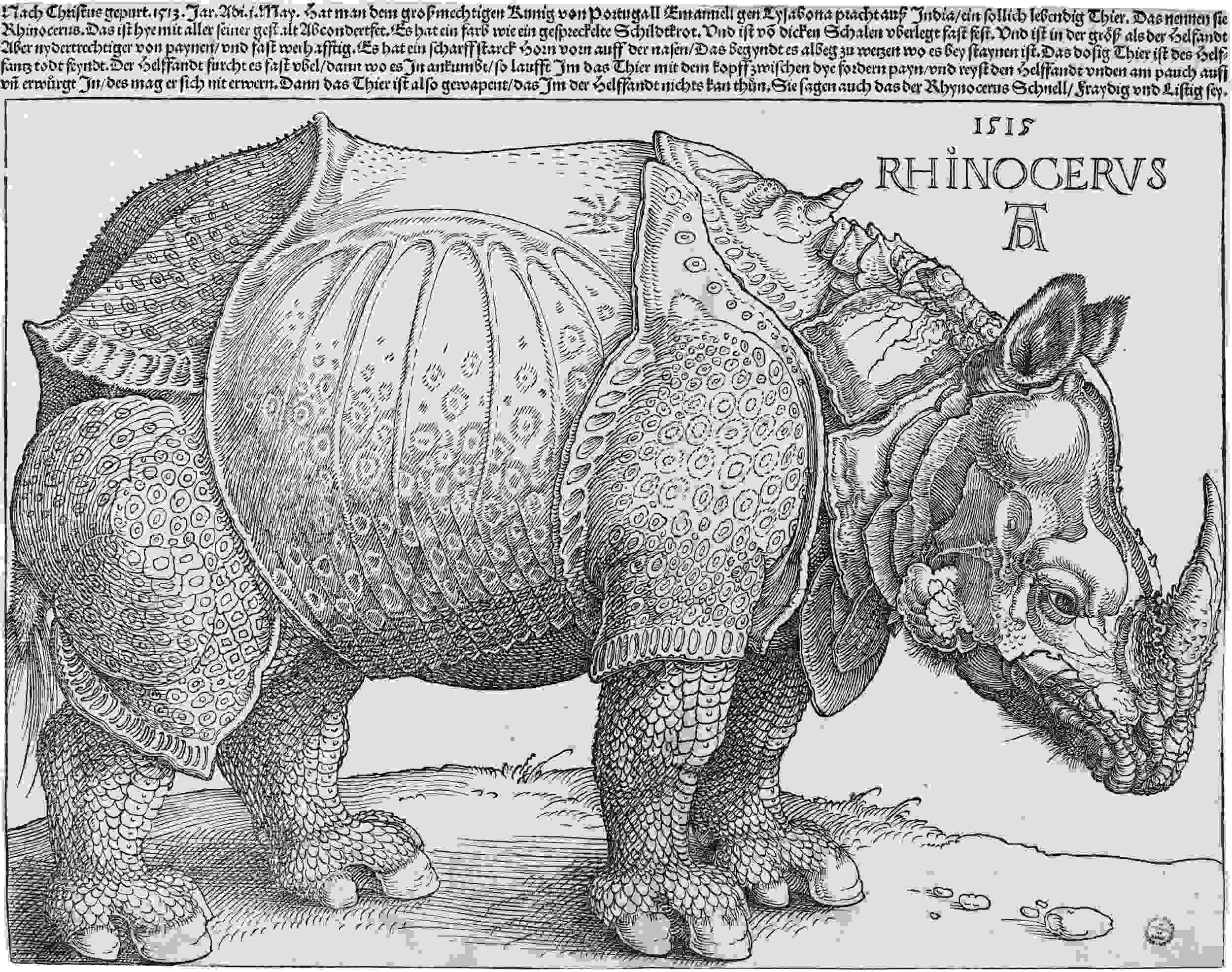
BJP even in its last term as part of NDA, had left no stone unturned in its monstrous attempt to appropriate culture for political use: during its regime, almost all the public cultural institutions of India, like the National Council for Educational Research and Training (NCERT), the Indian Congress for Historical Research(ICHR), the Indian Congress for Philosophical Research ( ICPR), the Indira Gandhi National Centre for Arts ( IGNCA), the Indian Institute of Advanced Studies, Shimla (IIAS), Bharat Bhavan in Bhopal and the National Gallery of Modern Art were politicized and shamelessly used as institutions for insular propaganda. They are also slowly penetrating the governing committees of the three Academies. The attacks by Hindutva outfits on films like Deepa Mehta’s Water and Fire, Ameer Khan’s Fana and Rang De Basanti, Nandita Das’s Firaaq, on the radical documentary makers like Anand Patwardhan, Gopal Menon and Nakul Sawhney, on the paintings of MF Hussain, the plays of Habib Tanvir, on Darpana, Mallika Sarabhai’s dance school, on Medha Patkar, Harsh Mander and Anand Patwardhan, the destruction of the tomb of the poet Wali Dakhani, the attack on the Bhandarkar Institute just because James Lane had referred to some books there to write his objectively researched book on Shivaji have not been forgotten by the democratically conscious sections of the public and the intellectuals. The case against Wendy Doniger’s books on Hindu religion and mythology, the appointments of Sangh activists and organizers as the heads of public institutions like ICHR, ICCR, ICPR, Nehru Museum and Library, National Book Trust, FTII, etc., the shameless interventions in institutions of higher learning like JNU, AMU, CUH, BHU, IIT Madras and the continuous suppression of dissent on all fronts, the slanderous attacks on critics on the social media including those like Priyamvada Gopal, Romila Thapar and Irfan Habib, the abuse of progressive intellectuals, scholars and academics , the lawyer’s notice against B. Rajeevan’s statement that Gandhi was assassinated by a Hindutva activist with an RSS background, the ceaseless misuse of section 66 A of the Indian Penal Code as well as the Sedition Law , the new surveillance regime intended to suppress criticism on the social media leading to the murder of Sheikh Mohsin Sadiq by the Hindu Rashtra Sena, the insult meted out to late Dr U R Ananthamurthy and Girish Karnad, two highly regarded Kannada writers for criticizing Modi, the actions against two campus magazines in Kerala, the threat to Shubha Mudgal, the famous Hindustani musician at the Sunnivale temple in the US by an NRI Hindutva activist, the attacks on the embers of the Ram-Rahim Mitramandal, the highhanded intervention in judicial appointments, the vindictive acts against human rights and eco-activists including the rising of the height of the Narmada dam, the arrests of Anand Teltumbde, the Dalit thinker and Prabir Purakayasta, the editor of Newsclick, a leftist journal, actions against all media who try to expose the malpractices of the BJP government, the death in custody of Stan Swamy, the arrests of several activists like Umar Khalid, Hanibabu and dozens of others, the ED raids on all the leaders of diverse shades of opinion and thinkers who oppose Hindutva ideology are all more recent examples of onslaughts on democratic freedom of action and expression. Ideological outfits like Shiksha Bachao Andolan Samiti are making their own contribution to the imposition of the neo-Hindutva worldview on the curricula in schools and colleges as well as public institutions of thought, research and culture through moral policing and death threats. There is no place for argument in the closed world of the Hindutva ideologues. The mushrooming Hindu outfits have moved ahead from attacking painting exhibitions and film shows to silencing writers like Perumal Murugan – until the judgment of the Madras High Court in the writer’s favour- and researchers like Megha Kumar, threatening a rationalist like KS Bhagavan with death and actually murdering thinkers and activists like MM Kalburgi, Govind Pansare, Narendra Dabholkar and Gauri Lankesh in broad daylight.
Suffice it to say that the hegemony of the Hindutva ideology poses a great threat to the plurality that defines the nature of India’s civilization and history and is the basis of its cultural richness. If the hegemony of a monolithic Brahminical Hindu religion challenges our religious plurality, the belief in the ‘Aryan’ origins of Indians (against Romila Thapar’s contention in her book Aryans that ‘Aryan’ is no more than the name of a group of languages and such a race never existed as also the arguments put forward by Kay Freeze, Jaya Menon, Tony Joseph and others who have proved with support from archeology, history, linguistics, ethnography and genetics that the people who speak Indo-Aryan languages came to India only in the third and last migration from Central Asia, preceded by two earlier migrations the first from Africa-Arabia, and the second from the Mediterranean region ) threatens our ethnic plurality. The silencing of dissent on the environmental front in the name of the ‘foreign funding’ of NGOs and the mega-idea of ‘development’ that helps only the richer sections of the society ( all recent studies prove wrong the ‘trickle-down theory’ of its proponents) and the dilution of environmental regulations go against the idea of ecological diversity while on the intellectual and cultural front, various forms of surveillance and suppression combined with the systematic destruction of liberal public institutions, are meant to silence the plurality of ideas and ideological debates. On the political front, one sees what Professor Anthony King calls ‘the theatre of celebrity’ where all the ministers and bureaucrats are made to listen to the commands of one man who is supposed to have won the votes for the new regime. Linguistic plurality is already under threat with the wrong characterizing of Hindi as the ‘National’ language as stated above and the proposed teaching of Sanskrit at the school level. Opposition from labour is also sought to be silenced through the new anti-labor laws tested out in Rajasthan and other states. The distinction between myth and history has been completely erased and there is a clear indication that we are returning to the stupid orthodoxy of middle-ages. The memories of the liberal Nehru era and all its markers including institutions and buildings are being systematically destroyed, roads and cities are being renamed and Hindu idols are ‘discovered’ under all Muslim monuments and mosques from Gyan Vapi in Benares to Taj Mahal in Agra.
Lord Acton once said, “It is bad to be oppressed by a minority, but it is worse to be oppressed by a majority, for there is a reserve of latent power in the masses, which, if it is called into play, the minority can seldom resist”. Read this with Rosa Luxemburg’s famous statement in her arguments with Lenin that freedom means the freedom to oppose. Today opposition is becoming more and more difficult and therefore more and more necessary, for without dissent democracy dies. When they speak of the 31 percent who voted for them let us speak of and speak for the 69 percent who did not vote for them for various reasons. When many political parties seem to be abdicating their responsibility towards the people, it is for the people to play the role of the opposition and re-educate the parties in the art of dissent. Writers and artists have a definite role to play in countering the fascist onslaught on the freedom of expression since it is a question of the very survival of art and literature and ultimately of democracy itself. This can be done both as artists and writers and as citizens who want democracy and diversity to flourish in India – that is through art as well as activism or maybe a combination of both.
K. Satchidanandan is a poet, playwright, fiction writer, travel writer, editor and social and literary critic in Malayalam and English with well over 70 original works and 30 books of translations of poetry from across the world. The poet, also a recipient of several awards, is the current president of the Kerala Sahitya Akademi.

